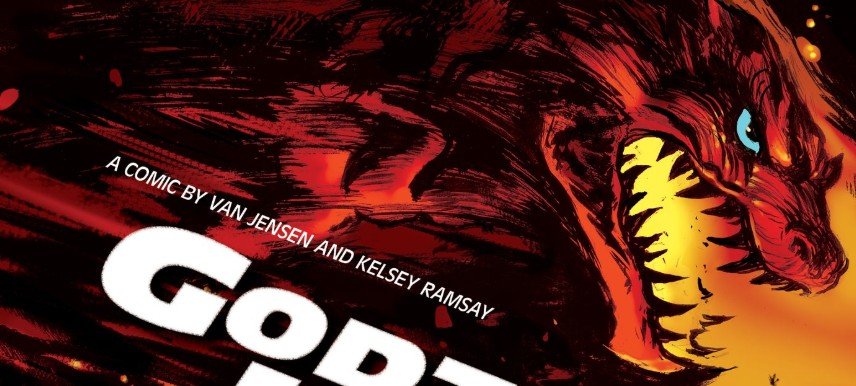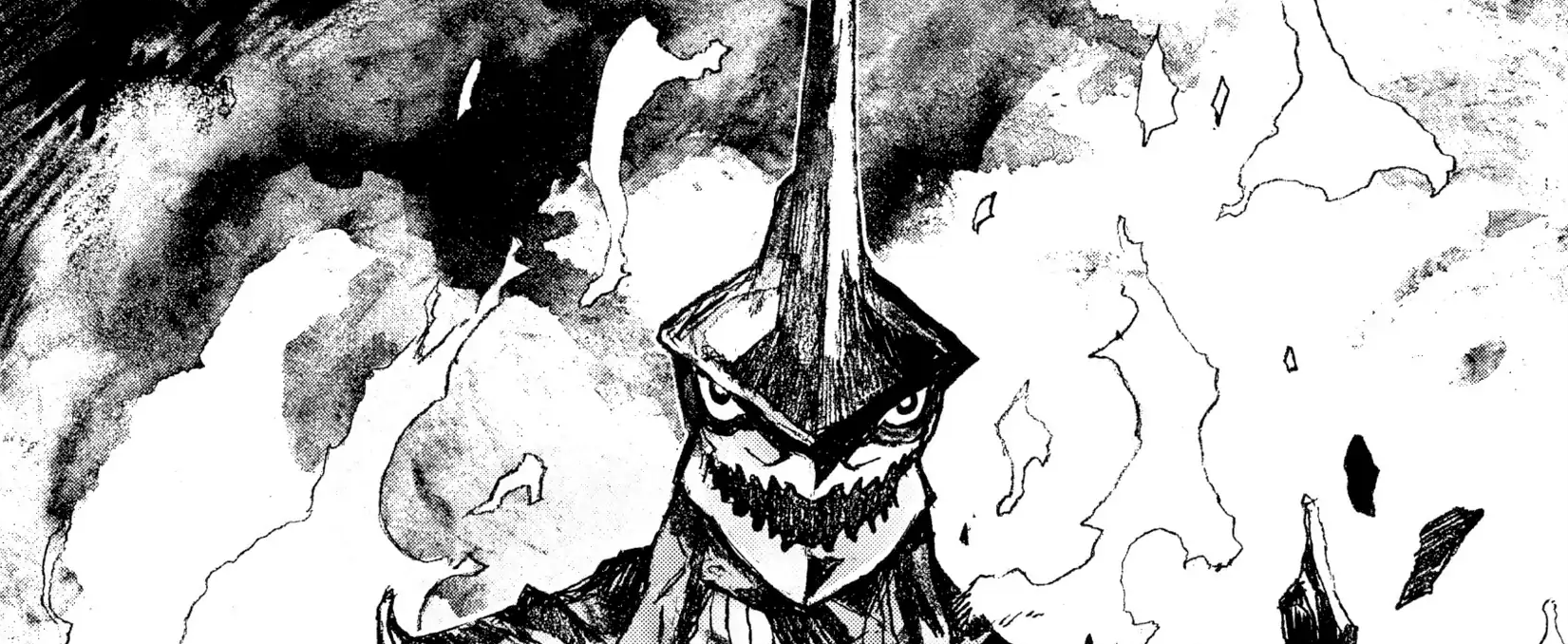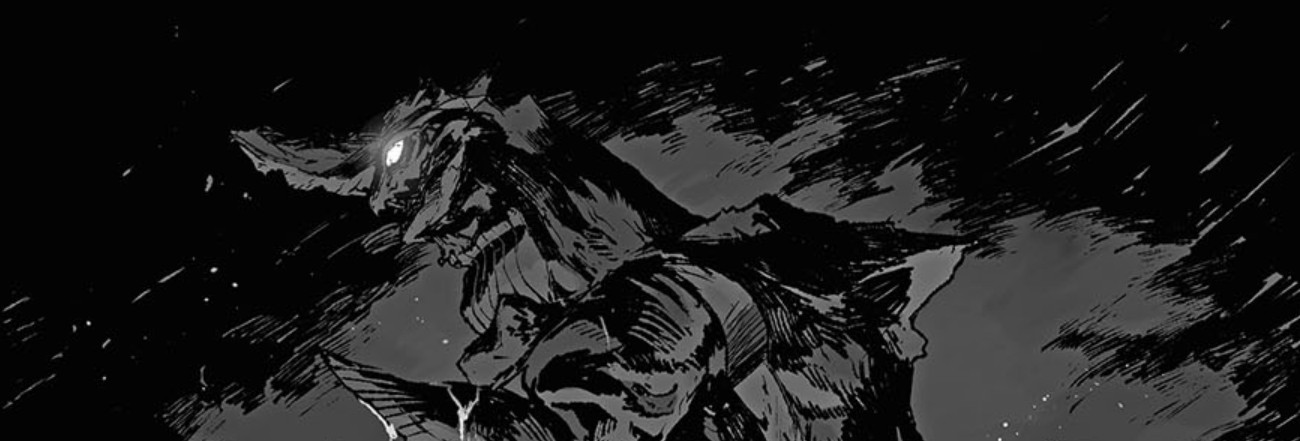
©IDW Publishing ©Boom! Studios
Godzilla TM & ©Toho Co., Ltd
“It’s skreonkin’ time!”
With Godzilla x Kong: The New Empire in theaters and DC/Legendary Comics’ Justice League vs. Godzilla vs. Kong winding down, IDW and BOOM! Studios (the publishers of Godzilla and Power Ranger comics, respectively) have collaborated once again in this sequel to their popular 2022 crossover Godzilla vs. Mighty Morphin’ Power Rangers. Writer Cullen Bunn (Deadpool Kills the Marvel Universe, The Damned) and colorist Andrew Dalhouse return from the previous miniseries, but Baldemar Rivas replaces Freddie E. Williams II as artist.
The first of this new five-issue story gets off to a confusing but exciting start, and Ranger fans especially will find plenty to love in this, with a wacky surprise thrown in for Godzilla fans. The White Ranger and his talking sword Saba battle the monstrous minions of space witch Rita Repulsa until Godzilla appears to fight them all. Inexplicably, the Multiversal Focus activates, throwing everyone into a parallel universe. The White Ranger and Saba meet a Ranger team “nearly identical” to his, and they plan how they’re going to stop the dimension-hopping Rita, who seeks allies elsewhere. Meanwhile, Godzilla and Rita’s monsters appear in that universe and wreak havoc in Angel Grove.
Even though I read the previous miniseries, I found this comic jarring at first. It starts in media res with the White Ranger fighting monsters, so I assumed this was Tommy Oliver a year or two after what we saw in the first series. We never see him out of costume, which has led some to think he isn’t Tommy. The Multiversal Focus is the maguffin-est and maguffins: it’s barely explained what it can do before it does its thing. I was also a little confused about Rita since she was last seen floating through the multiverse. Her usual cadre of minions—Goldar, Scorpina, etc.—are missing with no explanation. Now, this is probably why she seeks an alliance with fan- favorite villainess (and, if you’ve heard my podcast The Power Trip, my waifu) Astronema. She serves as a nice foil for Rita: calm and calculating vs. boisterous and impulsive.
All this to say, it’s assumed the audience already has knowledge of these characters while other plot elements are under-explained. It could be a case of delayed exposition in favor of starting with action to
showcase the world, as is common in anime and manga, but that remains to be seen. Rivas’ art is solid, but it does have some quirky, sometimes confusing choices. In the opening fight scene, the White Ranger deforms into a distorted, tube-man-like figure to denote fast movement. This wouldn’t be as noticeable if it happened with other characters, which it didn’t.
It’s a method that would make more sense in animation than in a comic. As for the characters, they look on-model enough to know who they are, but if you’re too used to the original actors or BOOM!’s models, you may need to adjust a bit. The monsters and mecha fare better, looking about as on-point as you can get. The iconic Heisei design is used for Godzilla, which has all but become Big G’s default appearance. Ranger fans will be happy to see more the obscure monsters Clawhammer and Tentacreep from Power Rangers in Space and Power Rangers: Ninja Storm, respectively, fight Godzilla in this. It’s cool seeing non-MMPR creatures in this high-profile story, especially when they could’ve easily been anyone else.
The character balance is definitely tilted toward the Rangers in this first issue, but hopefully that will shift as the series progresses. The previous miniseries deftly handled both IP’s well. Sadly, the sensationalistic cover featuring Godzilla wearing the Dragonzord as armor isn’t in this issue. The cover for issue number two features Jet Jaguar teaming up with the Rangers, but given both IDW’s and BOOM!’s track record of outrageous covers that don’t reflect a book’s content, I’m not sure everyone’s favorite robot with a Jack Nicholson smile will appear, as epic as that would be.
If I may nitpick, despite great attention to detail on Ranger lore, the cameo by the beloved bullies
Bulk and Skull is sullied by their lines being reversed. I know that because they say their names,
which had been switched. Whether this was a simple error or blatant oversight, I don’t know, but
I’m leaning toward the latter. Still, it’s a minor issue. The cliffhanger holds a lot of promise. Astronema’s Psycho Rangers, who were the best “monsters-of-the-week” in Power Rangers In Space, show up and reveal they have the ability to combine into “Psycho Ghidora” (no “H” at the end, but I’ll forgive that). How that works or what it means, I don’t know. At the moment, it’s just a huge piece of fan-service, and I’m here for it. Overall, this is a solid start to the miniseries. I’ve already added it to my local shop’s pull list. Because, you know, Astronema-ma. Ha!




